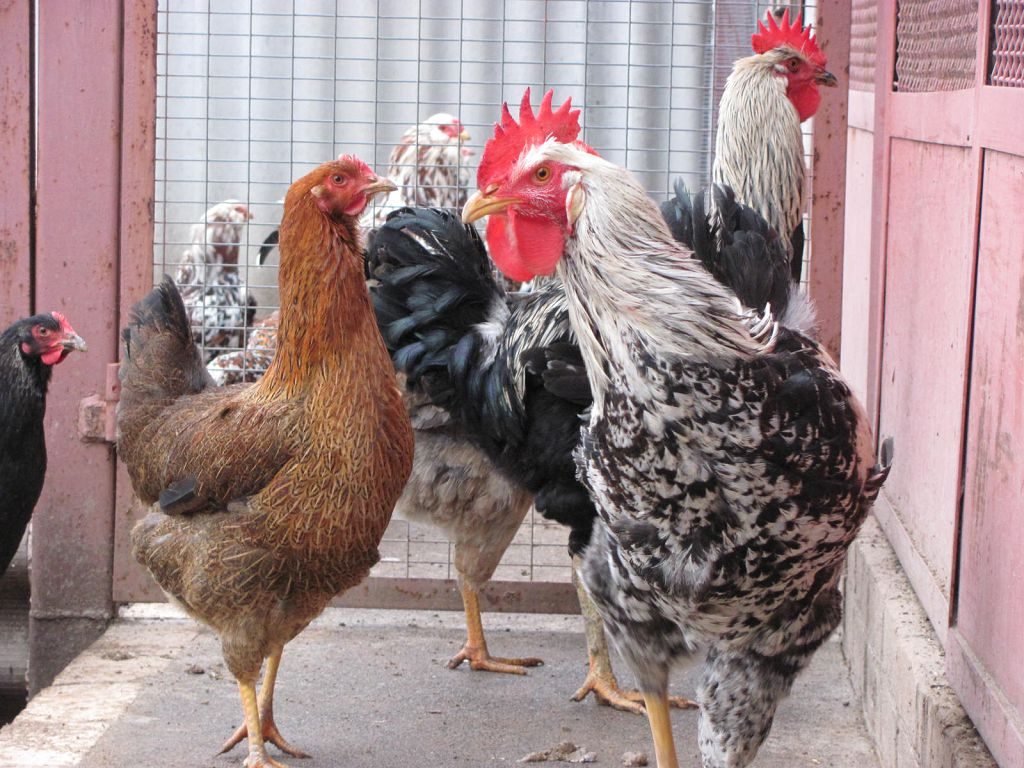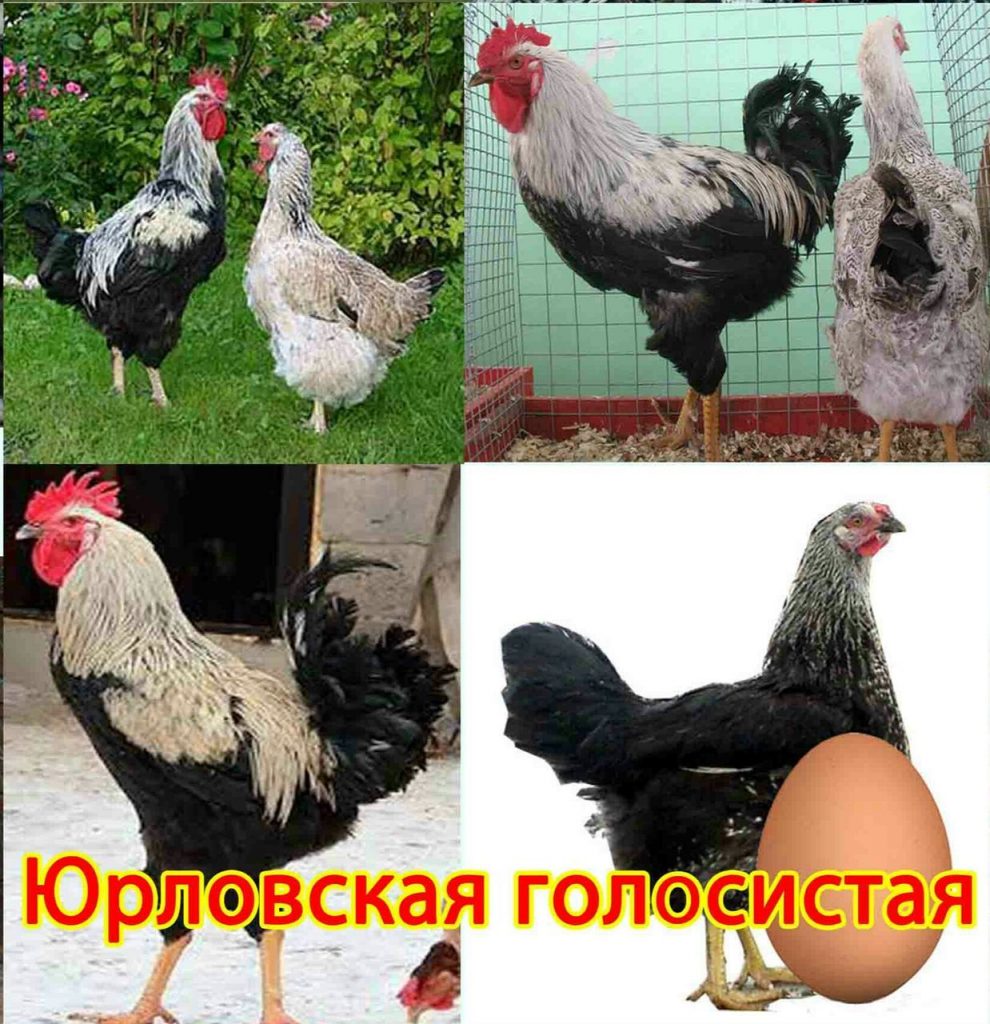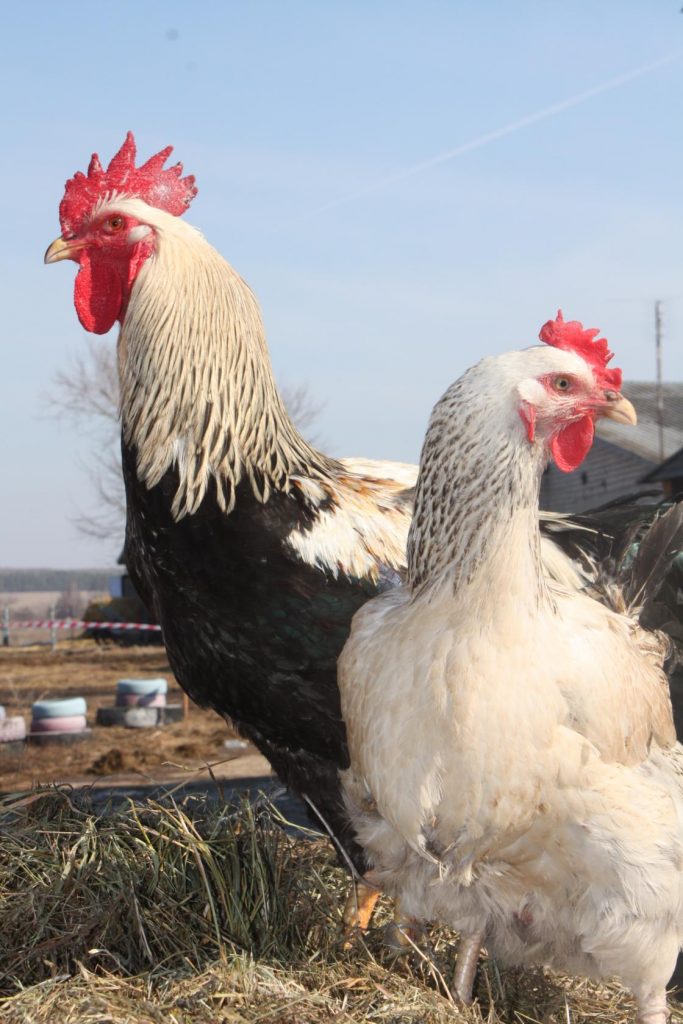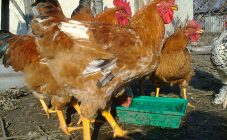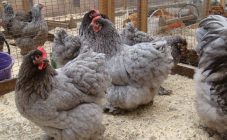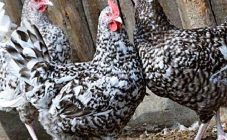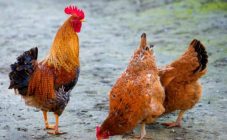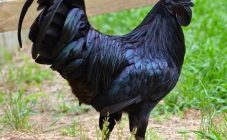Content:
Yurlovskaya vociferous breed of chickens is one of the oldest meat-eating groups. The variety appeared as a result of crossing a local and a fighting breed. This is also indicated by the appearance, namely the developed superciliary arch, unusual fighting posture and a slightly raised torso on long high legs. The breed was developed for connoisseurs of birds with a sonorous voice.
History of creation
Yurlov's vociferous chickens are domestic birds that have a fighting character. The first units appeared in the 19th century. When forming this species, cocks with strong, drawn-out voices were specially selected. Yurlov roosters often took part in battles. The surviving individual was considered the winner. The second participant was usually sent for meat. Birds differ from the rest in taste, large carcass size and laying delicious nutritious eggs.
Yurlovsky chickens are a type bred on the territory of several regions: Oryol, Voronezh and Kursk, by the labor of domestic breeders. The bird is named after the name of the village in which the first specimens were bred - Yurlovo. Due to the ability to sing loudly and for a long time, they were called vociferous. In addition, when selecting cocks, the presence of a strong, drawn-out voice is a characteristic that is of primary importance. Every farmer who has roosters of this species waited impatiently for them to sing. When selling live heads, the price varied precisely, depending on the quality of the voice.
Description and characteristics
For a better understanding of what the Yurlovsky chickens are, the description of the breed is discussed below. For representatives of the species, a large body and a large weighty skeleton are considered characteristic. Long, powerful legs and an elevated torso indicate fighting roots, more prominent in the male part. Birds have a wide head with a rounded nape.
Most of the ridges are in the form of a leaf, but they can be nut-shaped or pink-shaped. The birds have a stately, proud appearance, which is accompanied by pronounced brow ridges. The beak, lowered down, has a curved shape, short length, yellowish in color.
The bushy tail, located almost straight in relation to the back, is of small size, slightly similar to a squirrel, attracts attention. The color of the plumage can vary from dark to silver, or be dark yellow with red spots. The color range of the eyes is directly dependent on the color of the plumage and can vary from orange to brown.
Regardless of gender, members of the genus are characterized by a long neck with a prominent nape, a wide chest and shoulders that stand out in front. The earlobes are red. The body is slightly elongated vertically. Late ripening is a breed characteristic.
The first eggs appear in hens at the age of 8-9 months. The main pride of the species are eggs of cream color and unusually large size, covered with a strong shell. Most of them weigh about 80 grams. Individual units are up to 100 grams. Annual fecundity of one layer from the first laying is up to 160 pcs. Further, this figure grows to 180 eggs.By providing chickens with a warm room, egg production can be prolonged during winter.
The eggs of the breed are valued for their high incubation rate. From one tab, you can expect up to 80% of the output. About 90% of the chickens survive, 100% reach maturity, if properly kept. Some chickens have an unsuppressed hatching instinct, which is successfully used by farmers to breed day old chicks. The Yurlovsky type of chicken is popular due to its simplicity in care and nutrition, as well as for the high quality and taste characteristics of meat products.
Growing features
The vociferous breed is taken as a basis if a new domestic species of birds is developed. At the present time, only private farms and non-specialized poultry farms are engaged in breeding chickens of this species. In this way, a valuable genetic reserve is maintained.
Yurlovsky chickens are considered excellent egg producers and are often bred for meat, but they are not a breed suitable for industry.
The reasons why the breed is not used for industrial purposes lie in the features:
- Fighting roots. It is not known exactly what breeds were used for breeding chicks, but the fact that the fighters were also included in the composition is indicated by the structure of the body and appearance. In addition, roosters are prone to fighting with representatives of other species. This makes it difficult to grow them in a farm environment - the farmer suffers heavy losses on injured birds. This even applies to chickens. From the age of one month, the chicks begin to conflict. It is best of all to grow the Yurlovskaya vociferous in separate groups, in enclosures, without changing the composition of their inhabitants;
- The need to recruit families. Completing this breed in families, it is necessary to select one rooster and from 10 to 20 hens, focusing on the activity of males. It is extremely rarely recommended to plant the producer, letting him into the aviary only for the evening. It is worth providing each family with a separate corner. The problem here lies in the large mass of roosters and sharp spurs that harm the layers. Often, layers of the second year need to treat wounds and even stitch them;
- Feeding. At first glance, the birds are constantly hungry. Therefore, they need much more feed, and the nutritional requirements are much higher. It is especially important to control the quality of food during the transition from chicken to adolescence. At this time, the chicks are actively growing and developing. It is necessary to double the dose of protein consumed. For the winter, a variety of vegetables is provided, a protein admixture and flour from herbs are required. It is necessary to feed the bird, given the fact that they quickly gain weight. In the summertime, the daily rate can be reduced. Vitamins and mineral supplements are considered mandatory;
- Features of breeding. The title reveals the main purpose of the bred species. A long period of work on the breeding of the breed consisted in the selection of units with long and exciting singing. Nobody thought about the industrial-productive goal. Therefore, although representatives of both sexes are gaining impressive weight, they need much more time for this than other breeds. Unlike laying hens with a productive indicator, vociferous hens can lay eggs of large sizes, but in smaller quantities. All this speaks of the low profitability of meat and meat products at high feeding costs;
- Selection secrets. Approximately 50% of laying chicks can be quality brood broods, producing a full brood of chicks. During the summer period, chickens of the Yurlovskaya breed are able to incubate at least 2 clutches.
Chicks are large, mostly dark in color. Chicks need adequate nutrition from birth. During development, feather cover is sparse and appears late, which in other breeds is considered a sign of insufficient feeding. High temperatures during cultivation also inhibit the appearance of feathers.Chickens are very tender, therefore they need controlled lighting, a complete and varied diet, enriched with minerals. There is a need for vitamin supplements. Males are considered especially vulnerable at the genetic level.
Advantages and disadvantages
Like other types of poultry, Yurlovskaya vociferous to reveal its full potential requires care, proper maintenance and nutrition. Despite their particular unpretentiousness, representatives of fighting relatives cannot stand a closed and cramped space. This feature makes it impossible to live in cells. Someone was impressed by the vociferous chickens, but for others they were a disappointment.
Based on the feedback from farmers, the following positive aspects are highlighted:
- Body massiveness. A lot of healthy meat is obtained from carcasses. It should be said about the taste and quality of the product;
- As for the fighting species, chickens have good egg production rates. The large size of the eggs should be noted separately;
- Vocal breeds are less susceptible to disease;
- They do not require much effort in keeping and growing.
The disadvantages include:
- not all hens want to hatch eggs, which is not suitable for all farmers;
- aggressiveness caused by fighting ancestors, often leading to the death of birds.
The true purpose of selection is clear singing. Today, when breeding a breed, a farmer does not select representatives by voice. For modern breeders, birds are of greater interest - producers, which are used for industrial purposes.
